Movie Review – Blue Is The Warmest Colour
A stunning performance by Adele Exachopolous, and a terrific script and direction from Abdellatif Kechiche make Blue Is The Warmest Colour a defining coming-of-age story for this generation. Sexy, raw and powerful, there’s little more I can say other than to ensure you see this film at least once. If you’ve ever been in love, been confused about love, or had your heart ripped from your chest and stomped on, this is a film you need to see.
– Summary –
Director : Abdellatif Kechiche
Year Of Release : 2013
Principal Cast : Adele Exarchopoulos, Lea Seudoux, Catherine Salee, Aureliene Recoing, Anne Loiret, Benoit Pilot, Alma Jodorowski, Salim Kechiouche.
Major Award Wins : 2013 Canne Film Festival: Palm d’Or.
Approx Running Time : 179 Minutes
Synopsis: Adele meets Emma, a blu-haired young woman in a gay bar, and the two begin a relationship.
What we think : A stunning performance by Adele Exarchopoulos, and a terrific script and direction from Abdellatif Kechiche make Blue Is The Warmest Colour a defining coming-of-age story for this generation. Sexy, raw and powerful, there’s little more I can say other than to ensure you see this film at least once. If you’ve ever been in love, been confused about love, or had your heart ripped from your chest and stomped on, this is a film you need to see.
**********************
It’s not all about the sex.
Okay dudes, time to sit up straight and let me give you a piece of advice. As a man, a manly man, a man with hairy bits and who manscapes less regularly than Sean Connery at a Vaseline convention, I’m here to admit that a slight bit of misogynistic curiosity got to me before I watched Blue Is The Warmest Colour. I’m as red-blooded as the next heterosexual male, and I’ll be damned if I don’t mind a bit of lesbian action here and there (frankly, if I was a chick, I’d be a lesbian too!), so for a film to come out that contains some lengthy sequences of girl-on-girl action, I figure that’s a film I ought to see, right? The film, based on the graphic novel by Julie Maroh, tells the story of a young teenage girl who falls hard for another, a blue-haired vixen with whom they share some passion, excitement, and the inevitable breakup one always sees in dramatic work like this. It’s not a pornographic exploration of lesbianism, not in the least. So as one hot-blooded dude to another, let’s get that set right up front. Blue Is The Warmest Color is not a film of gratuity – it’s a sensitive, creative, strongly developed work of art, and should be appreciated as such. I’ll touch on “those scenes” throughout my review, but let it be known that the film doesn’t dwell on it any more than is necessary to draw some emotional connection from.
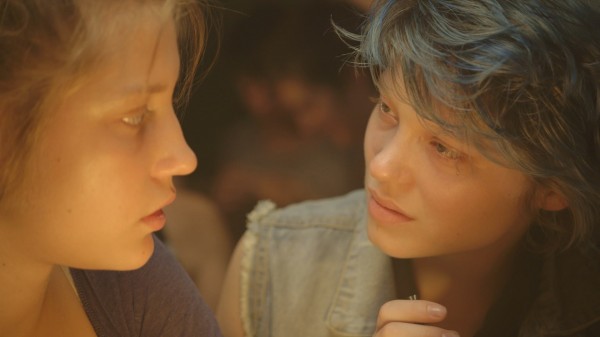
Plot Synopsis Courtesy Wikipedia: Adèle (Adele Exarchopoulos) is a French high-school student whose female friends gossip about boys and encourage her to go out with a boy who is attracted to her. They date and have sex, but she is dissatisfied and breaks up with him. While walking on the street one day, she passes by a woman with blue hair and instantly falls in love. She goes with some gay friends to a gay dance bar, but leaves and walks into a lesbian bar, where she experiences assertive advances from some of the women. The blue haired woman is also there and intervenes, claiming Adèle is her cousin. The woman is Emma (Lea Sedoux), an advanced Fine Art student. They become friends, but Adèle finds herself even more in love with Emma. After a while, she confesses her love to Emma, who reciprocates. They have sex and begin a relationship. Adèle moves in with Emma, and they meet each other’s families, although Adèle does not explain that Emma is her lover, presenting her as a tutor whom she regards as a friend.
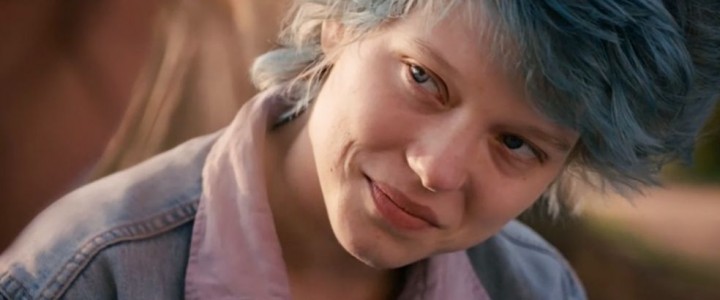
The original comic, a superbly drawn and written piece by Julie Maroh, contained some of the most heartbreaking dialog about relationships – straight or gay – that I’ve ever read. It’s forthright, confronting and – if you’ll forgive the pop-culture lament – real. Translating literature to film is, as proven by the raft of cinematic bombs scattered across the decades, an affair fraught with danger, probably none moreso in recent times than comic-book-to-film efforts. While novel literature is typically drawn from the imagination of the reader to form a mind’s eye image of the characters involved, comics present a more defined visual aesthetic to compare on film, and sometimes the end result of a director’s best intention isn’t the one audiences connect with. With Blue Is The Warmest Colour, however, director Abdellatif Kechiche has captured not only the uplifting and tragic elements of the comic, but somehow magnified them within the context of the film. He’s changed some things – in the comic, the character of Adele is named Clementine, and the comic book has a vastly more tragic outcome than the film, while some minor character alterations to streamline the story within the context of the film medium have also been made.
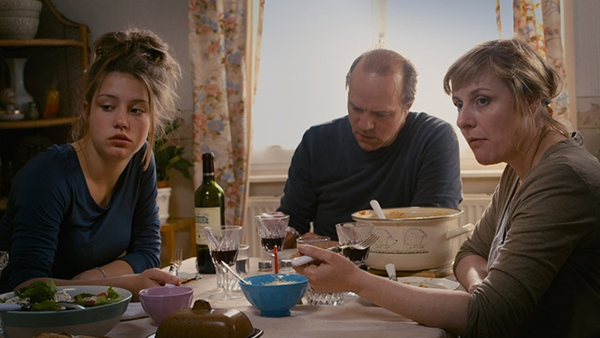
Blue Is The Warmest Colour is a terrific character study of love and loss. Led by the exceptional performance of Adele Exarchopoulos, the film meanders through the highs and lows of a human relationship, a searing and powerful character study that brings with it some moments of true heartbreak. The sting of that raw, true first love, followed by the eventual cooling of ardor and inevitable hurdle of disillusion, concluded by the wrenching agony of a breakup, are all superbly realized by Abdellatif Kechiche’s magnificent film. Yes, it’s very French, with plenty of realistic sex (which some conservative wankers might present as “pornography”) and liberal dialogue, but at its heart is a moving account of one young woman’s journey from innocence into adulthood. Whereas a lot of films try and shoehorn sex into a film where it’s probably not needed, and make it more graphic or pointed than it needs to be, here the sex seems legitimized somehow, as if it’s designed to move the story forward. I’m not sure how watching two girls have sex for ten minutes (not once, but twice!) could possibly “move the story along”, but within the context of the film, it works well.
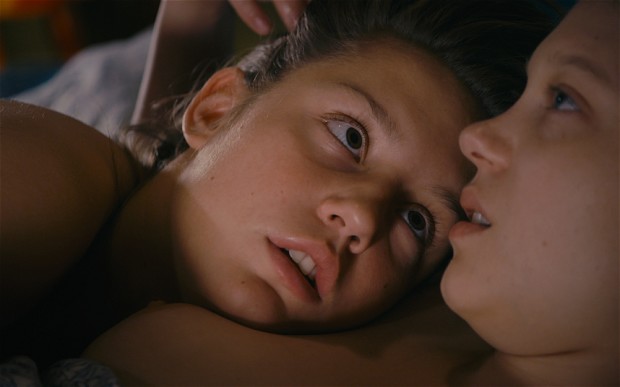
The film is driven by the performances, and again I point the spotlight at Exarchopoulos, who gives an Oscar-worthy portrayal in her role as Adele (weird they both have the same name, though). Exarchopoulos has that snotty-nose, quivering lip style of crying down to a fine art, and pulls out all the stops in the film’s final third, where her relationship with Lea Sedoux’s Emma begins to fraacture and collapse. She’s earnest, warm and utterly compelling, able to project the school-teen angst and confusion about her sexuality in the opening half, and provide compelling “adult” emotional states in the close. Frankly, even though Sedoux might be top billed, she’s second fiddle to Exarchopoulos. Sedoux, meanwhile, ain’t a slouch in the acting department either, although I did find Emma to be somewhat too aloof for my liking (personal preferences and all), but gives a good account of herself nonetheless. She’s older and wiser than Exarchopoulos, but still looks youthful enough to pass as a girl only a year or so senior; Sedoux and Exarchopoulos have a chemistry together that is palpable on screen, and their scenes together are just beautifully done.
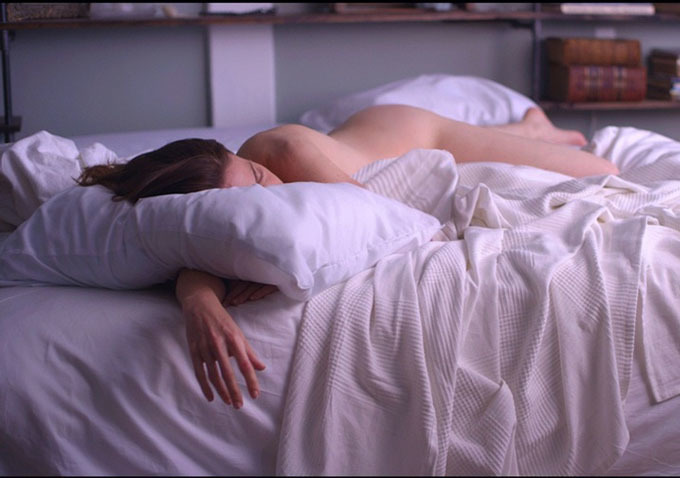
The film is rather long at nearly 3 hours – yes, three hours for a dramatic work that doesn’t involve goblins, hobbits, explosions or spacecraft! Imagine! – but it never drags. The story is involving, the characters are involving, and at times I just felt happy and privileged to be allowed to witness this journey of self discovery. Adele’s “everywoman” arc, from confused teenage girl to confident young adult, could apply to anyone (man or woman), and the character behaves like a real person thanks to Abdellatif Kechiche’s screenplay, co-scribed with Ghalia Lacroix. The way Adele and Emma’s relationship commences, off the back of Adele’s initial, hesitant dalliances with both straight and gay relationships in the past, is given the kind of raw, sweaty realism needed to contrast the visual style Kechiche employs throughout. Kechiche keeps the camera tight in on faces a lot of the time, throughout much of the dialog scenes, refusing to cut to wide angles, which provides the film with a more intimate, personal nature, as if we’re eavesdropping on a relationship we perhaps shouldn’t. It’s the honest performances by Sedoux and Exarchopoulos, coupled with the effortless direction of Kechiche, that gives this film its power.
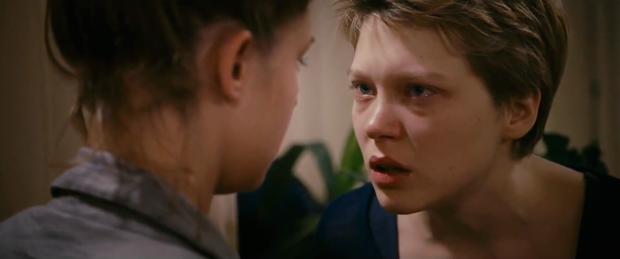
Blue Is The Warmest Colour is one of the best films I’ve seen in years. Sharp, honest and raw, bringing an unbridled sexuality and flaming hot view of relationships, Blue isn’t a film about being gay or straight, nor is it a film about social or gender lines – it’s a film about love, hope, loss and grief, all stunningly performed by the two brilliant leads. It’s a human film, an emotional film, and is easily a contender for one of the best films of 2013.


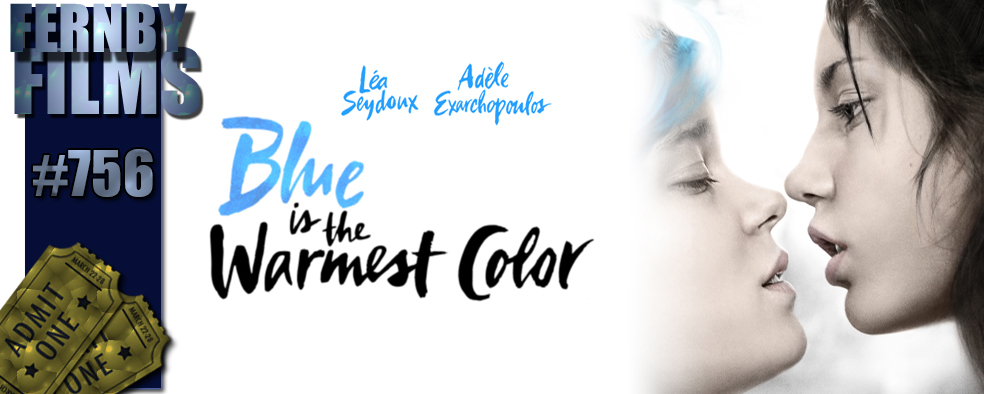




 Blue Is The Warmest Colour
Blue Is The Warmest Colour
 Blue Is The Warmest Colour
Blue Is The Warmest Colour
Voice your opinion: Did the Academy make a mistake by not nominating Adele Exachropoulos for an acting Oscar?
[polldaddy 7827732 http://answers.polldaddy.com/poll/7827732/ polldaddy]
…and yet we don't seem to have the same problem with long drawn out scenes of gratuitous violence… interesting debate.
I haven't seen this yet but your glowing review makes me want to catch up with it sooner rather than later.
My recent post Classic Scenes #11: The Wolf of Wall Street (2013)
I think it's a debate that'll last until the end of time, frankly. We've become so accustomed to finding displays of sexual activity on-screen somewhat of a taboo that when film-makers use it to propel a story forward, the film is labeled as "controversial" and "adult", when in reality it should be the violent ones labeled as such….
Do check it out, Dan. I'd be interested in your thoughts.
Still have to finish it (have seen about half), but what I have seen of it I was very impressed by the acting. As for the sex scenes….don't think they needed to be that long…
My recent post The Monday Question: Favorite character!
Each to their own on that point, mate; I agree, they probably didn't need to be quite as long as they were, but I think – within the context of the film – they certainly weren't gratuitous in any way that demeaned either the characters or the story. I think it's interesting that a film can polarise so many people just through a sex scene; on the one hand, the more liberal European mindset would accept something like this as just another story-telling platform, through sex, but to the more conservative viewer will be seen as borderline porn. Is it something about emotional connection through sex that people find…. uneasy to watch? We're happy to have characters blow each other to smithereens and use this "hoorah" stuff to "bond" through adversity, yet we flinch at people connecting through sex…. Or is it just me that thinks this?